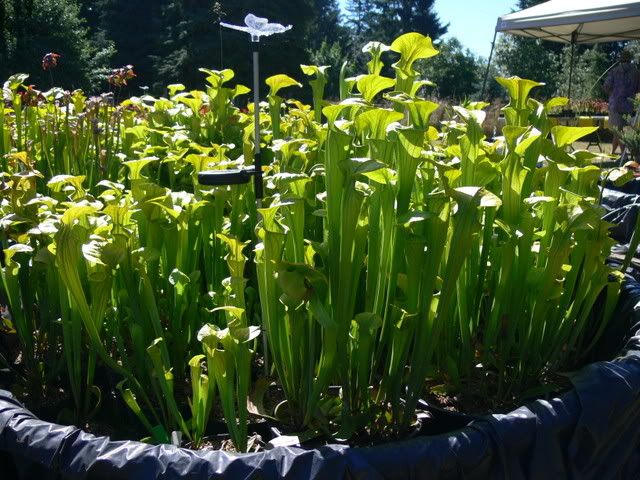The whole nursery is run out of these plastic lined pools and the adjacent greenhouses. Thousands of divisions are made every year from their stock plants.

They use RO water for everything pumped out of their 700gal/day GE Merlin, which I am considering purchasing for my soon to be bog and pond (and greenhouse). They pot everything in a mix of peat moss and perlite 1-1. They would like to use sand, but its heavy and hard to get the right sand around here and it's heavy! The wrong sand has too much of any mineral that can leach out. They recommended pumice for my bog garden because it doesn't float as much as perlite.
I also learned that they are no longer recommending collecting rain water off of composite or wood rooves. Composite has copper added to help prevent moss growth, which is poisonous to Carnivores. Wood roofing has arsenic (sometimes...) which apparently can also harm plants.(?) They say if you have a metal roof, run off should be safe to use.
Sarracenia oreophila , a FE species that does fine in cultivation.

Sarracenia rubra jonesii, another FE species with awesome veins.

My favorite species is Sarracenia flava because of it's huge range of color forms. This is rubricorpa, the red tube variety. They wouldn't sell me one because they have so few. Their growth rate is very slow compared to the normal flava. In addition, they have to be propagated by division only since sowing seed (even selfed seed) does not produce red tube plants. It may produce some, but not many, apparently. They explained the only reliable way to do it is to cross a red tube with an ordinary flava and grow that seed. Then take those seedlings and cross them with eachother. These crosses should result in 25% red tubes... in 10 years.

And a wee Cephalotus. Almost got one, but I'll wait until the greenhouse is up and functional. They're a bit finicky, and did I mention weeee?







